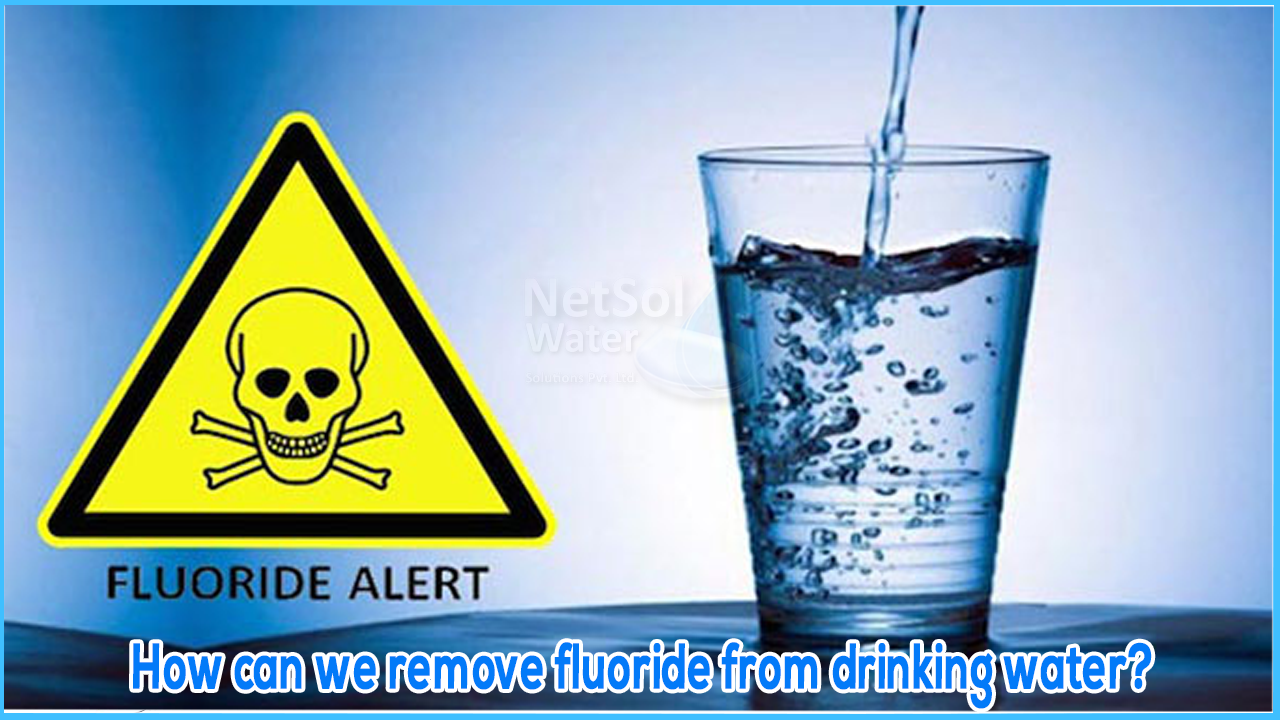Drinking water quality is a major problem in lately due to increasing water pollution. Fluoride is one of those pollutants that undermine the life forms, especially humans. A small amount of fluoride is a vital component to mineralize bone and protect it from tooth decay, higher consumption causes tooth enamel decay called fluorosis. Fluoride enters the aqueous environment through the weathering of fluoride-rich minerals and through anthropogenic influences, e.g. industrial runoff.
For example, the problem of fluoride in water is serious for tropical countries such as India, Kenya, Senegal and Tanzania. The best way to solve this problem is to use defluorination. Various methods are available for theremoval of fluoride from water, for example, precipitation coagulation, membrane-based methods, ion-exchange and adsorption methods. The precipitation coagulation process produces a large amount of sludge and can involve the leaching of undesirable components, Membrane processes are cumbersome and fouling is an unavoidable problem. Adsorption processes have their own particular aspects of interest, for example, simple and minimized water removal.
DEFLUORODATION METHODS OF WATER
To overcome the harmful effects of fluorosis, there are different approaches to defluorination, such as coagulation - precipitation, membrane separation processes, ion exchange, adsorption techniques and others (electrodialysis and electrochemistry).
- 1. COAGULATION AND PRECIPITATION METHOD
Lime and alum are the most common coagulants used. The expansion of lime leads to the precipitation of fluoride as insoluble calcium fluoride and increases the pH value to 12. Since lime leaves a residue of 8.0 mg F/l, it is constantly connected to the treatment of alum to ensure the best possible fluoride removal. In a first step, the precipitation takes place by adding lime, which is followed by a second step in which alum is added to cause coagulation. At the point where alum is added to the water, basically two reactions occur.
- In the first reaction, the alum reacts with a moiety of alkalinity to provide insoluble aluminium hydroxide.
- In the second reaction, the alum reacts with fluoride ions in the water. The best removal of fluoride is achieved in the pH range 5.5 to 7.5.Aluminium Salt is used to remove fluoride from water. The dose of fluoride depends proportionally on the concentration of fluoride. The dose of lime is about 1/20 of the dose of alum. The lime is used to make larger, denser flakes for quick settling. For cleaning purposes, the bleach powder is contained in an amount of 3 mg/L. It is the most commonly used method of defluorinationespecially at the community level.
- 2. REVERSE OSMOSIS (RO)
RO is a physical procedure wherein the anions are eliminated with the aid of using making use of pressure at the feed water to direct it via the semi permeable membrane. RO works at higherstress with greater outstanding rejection of dissolved solids.The membrane rejects the ions contemplating the sizeand electric charge. RO membrane procedure is the reverseof natural osmosis on account of carried out hydraulic stress to the excessive attention facet of the answer, itforces solvent clear out through the membrane, in opposition to astress gradient into the lower-attention answer.The procedurelikewise eliminates soluble and particulate matter, Incorporating salt from seawater in desalination. Inthe 80's, RO membrane separation method was efficaciously linked for the remedy of industrialwastewater for the elimination and recuperation offluoride from its effluents. More than 90% of fluoride canbe eliminated no matter preliminary fluoride attentionthe usage of RO membrane separation procedure.
- 3. NANOFILTRATION MEMBRANE PROCESS
Nanofiltration (NF) is the latest innovation among all membrane processes used for defluorination of water. The main contrast in the middle of NF and RO membrane separation is that NF has slightly larger pores than those used for reverse osmosis and offers less resistance to the ingress of solvents and solutes. As a result of the required pressures are much lower, the energy requirements are lower, the removal of solutes is much less complete, and the flow is faster.The Nanofiltration membrane, unlike RO, essentially removes the larger dissolved solids, making the process more prudent. Even so, the permeability of the nanofiltrationmembrane is higher than that of the RO membrane, which makes the performance of NF in desalination the best for brackish water. In the RO membrane separation, 99% of the salt in the water was rejected, resulting in the removal of all fluoride ions, while the NF membrane separation process results in incomplete defluorination of water and optimal concentration of fluoride in water by changing operating conditions can be achieved.



